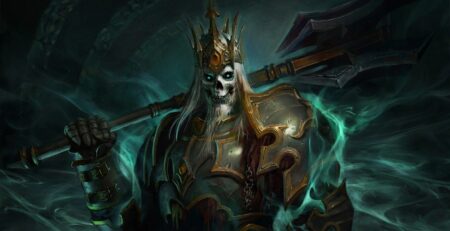
From the movies to television to their recent creative recharge in the comics, it’s hard to imagine a time when Marvel wasn’t on top of the world. But twenty years ago, it was a different story: teetering on the brink of bankruptcy, and then shortly falling off, the company made a decision to sell the rights to its characters to various film studios. On August 21st, 1998, New Line Cinema released Blade and forever changed the face of cinema, and the superhero genre as we know it.
Blade first appeared in The Tomb of Dracula #10 by Marv Wolfman and Gene Colan, as one of several vampire hunters trying to kill the Lord of Darkness. Unfortunately, his earlier appearances make him look and sound like a low-rent Luke Cage since he has garish clothing, a bright green blazer, and oversized shades combined with slang that sounds like nothing any human being would ever say in real life-black or not. His backstory, however, was far more interesting.
Born in a whorehouse in New Orleans, Eric Brooks’ life was changed forever when a vampire named Deacon Frost, pretending to be a doctor, fed on his mother. Eric was born as a dhampir, a half vampire, sharing the creatures’ terrible thirst for blood but not their weaknesses to sunlight and garlic. He was trained by musician Jamal Afari in the ways of vampire killing and made it his mission to eradicate all vampires from the face of the earth. In his travels, Blade encountered other vampire hunters, other superheroes, namely Doctor Strange and Spider-Man, and after being bitten by Morbius the Living Vampire gained new abilities including superhuman strength, a healing factor, and the ability to sense supernatural beings.
Blade, directed by Stephen Norrington (Death Machine) and written by David S. Goyer (Batman Begins) gave the vampire hunter a much-needed update. His wooden knives are replaced by shining silver stakes and a sleek saber. In place of a baggy blazer, Blade wears a flowing black trenchcoat and Ray Bans and is as quick with a biting remark as he is with fisticuffs. But the selling point of the film is the casting of Wesley Snipes as the Daywalker, and Stephen Dorff as his nemesis Frost.
Snipes’s stoic demeanor and no-nonsense attitude helped make Blade a standout in the pantheon of Marvel heroes and has served to define the character in the modern-day. His entrance in the film is iconic; he strides into a vampire nightclub, just as they are about to feast on an unsuspecting victim. A hush falls over the crowd as the Daywalker enters. You can taste the fear in the air as a dark smile crosses his face. And then, all hell breaks loose as he starts cutting down the undead left and right with brutal efficiency. This immediately hooks the audience and tells you everything you need to know about Blade.
Frost, in turn, received a similar update. In the comics, he was an elderly man but in Blade, he is portrayed as a 20-ish anti-authoritarian seeking to upend the vampire hierarchy and obtain the power of the blood god La Magra. Dorff’s performance is wonderfully over the top. He chews the hell out of the scenery and his sneering in-your-face attitude is the perfect contrast to Snipes’ barely contained contempt.

Although it received mixed reviews at the time, Blade was a box office hit, grossing $131.2 million on a $45 million budget. It also helped to set the standard for future Marvel films by proving that even a second-string character can become a cultural hit in the right hands. In taking the best elements from the comics and translating them to the modern day, Blade started a trend that would continue in future films including Batman Begins, Sam Raimi’s Spider-Man, and the first Iron Man film. Snipes’ portrayal as Blade spread to the comics, most notably in the 2006 series by Arrow scribe Marc Guggenheim and artist Howard Chaykin, and even spawned an anime series, which liberally borrowed several plot points from the movie; other Marvel heroes have since received a similar treatment.
The film’s crowning success is how simple, yet engaging, the plot is. “A guy who kills vampires” doesn’t sound like it could fill two hours; however the film is packed with action, pathos, and a deep dive into the mindset of its main character. The stakes slowly escalate from personal to apocalyptic; most superhero films nowadays only pick one of the two. Blade acts as the first successful “genre fusion” experiment for Marvel, in that it took a comic book character and dropped them into a certain movie, This time it was a horror film. Future Marvel films, especially those in the Marvel Cinematic Universe, have used this technique to great effect like making Captain America: Winter Solider a political thriller while Ant-Man is a heist movie.
There is no doubt that Blade is a testament to how the Marvel universe has found success outside of the comic pages and should be considered a massive influence for the current boom of comic book movies. With Snipes expressing a desire to return to the role, the Daywalker will hopefully continue his battle against the hordes of the night.



